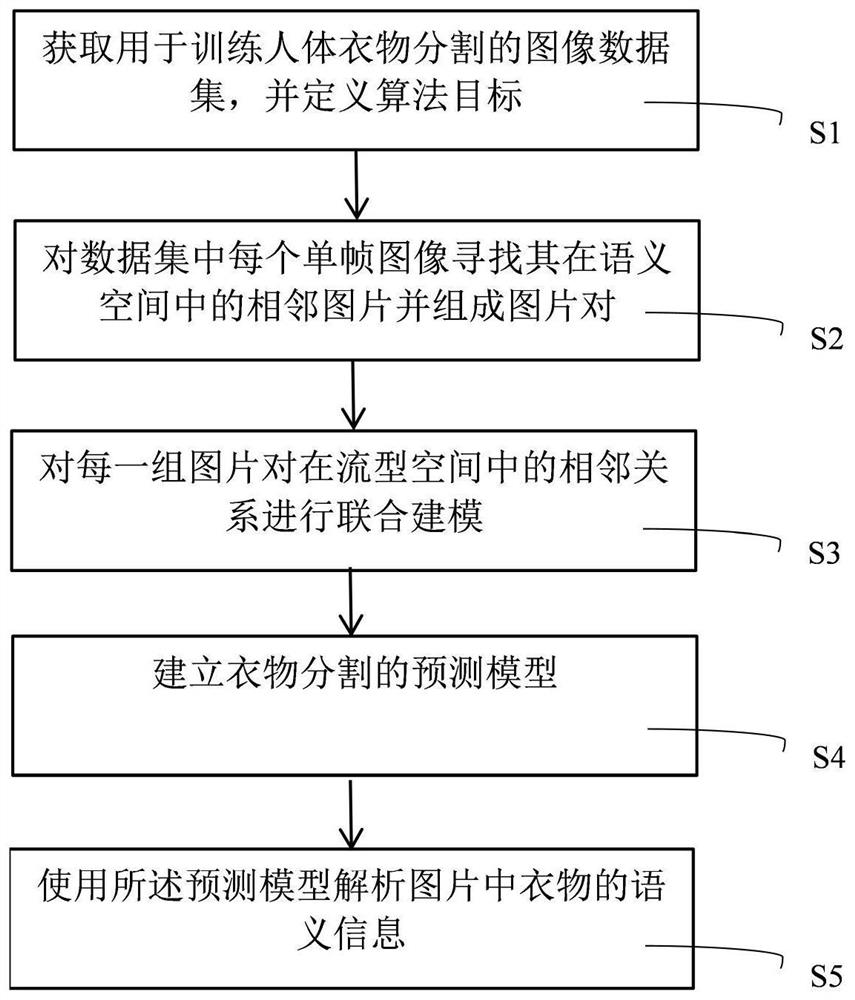A Semantic Consistency-Based Human Clothing Segmentation Method
A semantic segmentation and consistency technology, applied in the field of computer vision, can solve problems such as inability to extract reasonable features, insufficient data volume to limit the effect of deep learning, and achieve good application value, improve the final effect, and improve the effect of accuracy and efficiency.
- Summary
- Abstract
- Description
- Claims
- Application Information
AI Technical Summary
Problems solved by technology
Method used
Image
Examples
Embodiment
[0077] The implementation method of this embodiment is as described above, and the specific steps will not be described in detail. The following only shows the effect of the case data. The present invention is implemented on three data sets with ground-truth labels, namely:
[0078] Fashionista v0.2 dataset: This dataset contains 685 images with 56 categories of semantic labels.
[0079] Refined Fashionista dataset: This dataset contains 685 images with 25 categories of semantic labels.
[0080] CFPD dataset: This dataset contains 2682 images with 23 categories of semantic labels.
[0081] In this example, a picture is selected for each data set to conduct an experiment. First, the closest picture is obtained by calculating the similarity, and then the features of the two pictures are extracted respectively, and the adjacent pairs of this group of pictures in the flow space are compared. Relationships are jointly modeled to obtain the final semantic segmentation graph, such ...
PUM
 Login to View More
Login to View More Abstract
Description
Claims
Application Information
 Login to View More
Login to View More - R&D
- Intellectual Property
- Life Sciences
- Materials
- Tech Scout
- Unparalleled Data Quality
- Higher Quality Content
- 60% Fewer Hallucinations
Browse by: Latest US Patents, China's latest patents, Technical Efficacy Thesaurus, Application Domain, Technology Topic, Popular Technical Reports.
© 2025 PatSnap. All rights reserved.Legal|Privacy policy|Modern Slavery Act Transparency Statement|Sitemap|About US| Contact US: help@patsnap.com



